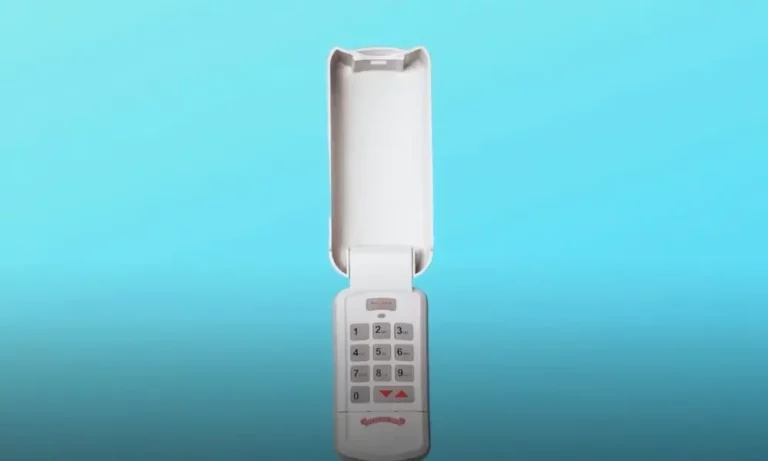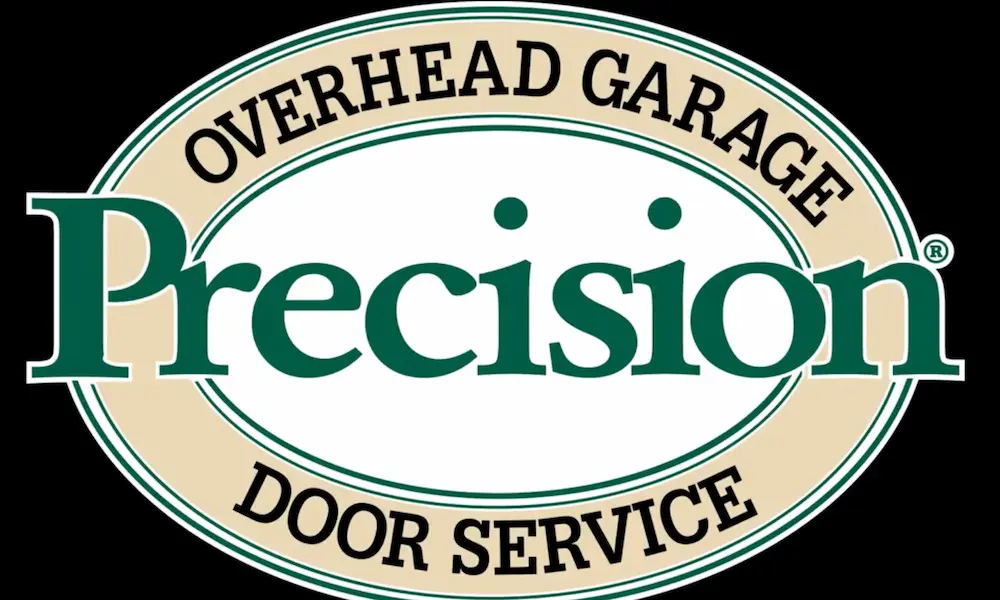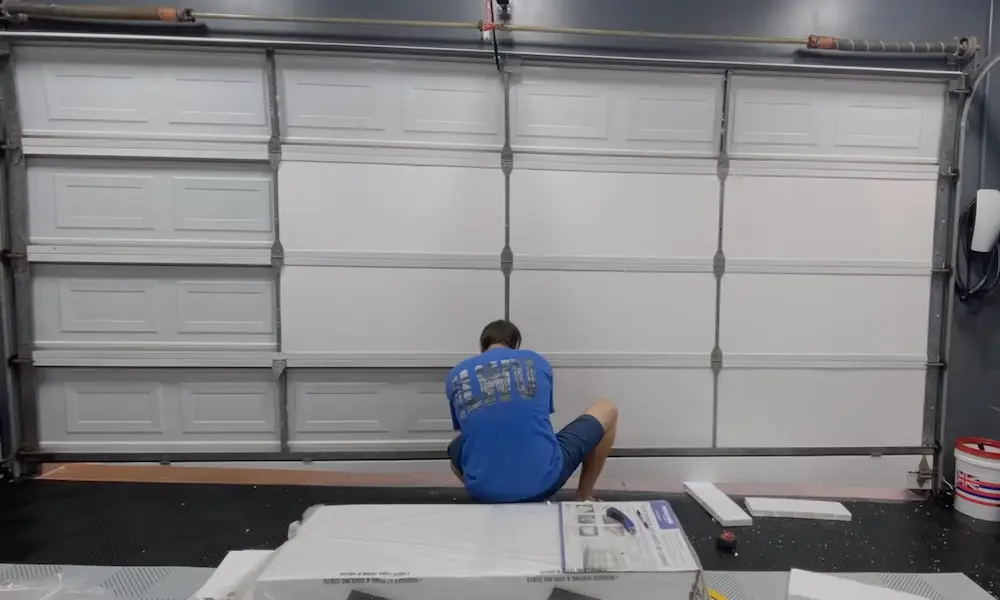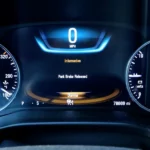You pull into your driveway after a long day, reach for your garage door keypad, and… nothing happens. Frustrating, right? Before you panic or call an expensive repair service, there’s good news: most garage door keypad issues have simple solutions you can handle yourself.
Why Your Garage Door Keypad Might Stop Working
When that convenient little number pad fails you, several common culprits could be to blame:
Dead or Weak Batteries
The most frequent issue with garage door keypads is simply power-related. If your keypad’s backlight doesn’t turn on or it works intermittently, your batteries are likely the problem. Most models use either 9-volt or 12-volt batteries, with newer keypads typically using 9-volt options.
For those in colder climates, consider using lithium batteries. They perform much better in low temperatures compared to standard alkaline batteries, which can lose power quickly during winter months.
Weather Damage and Physical Wear
Your garage door keypad braves the elements 24/7. Rain, snow, extreme temperatures, and direct sunlight can take a toll on this device over time:
- Water damage can corrode internal components
- Exposure to UV rays can crack or deteriorate the casing
- Temperature fluctuations can stress electrical connections
- Physical impact (like being hit by sports equipment) can damage internal systems
If your keypad shows visible cracks, discoloration, or loose parts, weather damage has likely affected its functionality.
Programming Issues
Sometimes the problem isn’t physical but digital:
- Your PIN code may have expired (temporary PINs often do)
- The system might have reset after a power outage
- Too many incorrect PIN attempts could have locked the system
- The memory may have glitched
Many homeowners forget that keypads need occasional reprogramming, especially after power disruptions or battery changes.
Connection Problems
For your keypad to work, it needs to communicate properly with your garage door opener:
- Loose or damaged wiring (for wired models)
- Radio frequency interference (for wireless models)
- Obstructions between the keypad and opener
- Distance issues exceeding the keypad’s range
Quick Fixes to Try First
Before diving into more complex troubleshooting, start with these simple solutions:
1. Replace the Batteries
This fix solves the problem about 80% of the time:
- Locate the battery compartment (usually behind the keypad or requires sliding the cover down)
- Remove the old battery
- Insert a fresh 9-volt or 12-volt battery (check your model requirements)
- Test by pressing any button – you should see the backlight illuminate
Pro tip: Keep a spare battery in a nearby, accessible spot so you’re never stuck outside with a dead keypad.
2. Clean Your Keypad Thoroughly
Dirt and grime build up over time, potentially causing buttons to stick or connections to fail:
- Use a slightly damp cloth with a mild cleaner (avoid harsh chemicals)
- Gently clean between and around buttons
- For stubborn grime, use a soft toothbrush around button edges
- Let the keypad dry completely before testing
A regular cleaning routine can prevent many problems before they start.
3. Re-enter or Reset Your PIN Code
Sometimes the solution is as simple as proper PIN entry:
- Enter your PIN exactly as programmed (including any extra “Enter” button presses)
- If that fails, try any alternative PINs you might have set
- As a last resort, reset and reprogram your PIN following manufacturer instructions
Step-by-Step Keypad Troubleshooting
If the quick fixes don’t work, follow this systematic approach:
Check for Physical Damage
Examine your keypad closely for:
- Cracks in the housing
- Stuck or damaged buttons
- Water damage or corrosion
- Loose mounting
If you spot physical damage, cleaning or battery replacement likely won’t help – you’ll need to repair or replace the unit.
Reprogram Your Keypad
Even if your PIN hasn’t changed, reprogramming can resolve many issues:
- Locate the “Learn” or “Program” button on your garage door opener motor (usually near the antenna wire)
- Press and hold until the indicator light starts blinking (typically 10-20 seconds)
- Enter your desired PIN code on the keypad
- Press the “Enter” button (sometimes labeled with “*” or “#”)
- Test by entering your code again
Different brands have specific programming sequences. Overhead Door’s programming instructions provide detailed steps for their models.
Reset the Entire System
When other methods fail, a complete system reset often does the trick:
- Disconnect power to your garage door opener by unplugging it
- Wait at least 5 minutes (this clears the system memory)
- Reconnect power to the opener
- Reprogram the keypad following manufacturer instructions
- Test functionality
Check the Wiring (For Wired Keypads)
If you have a wired keypad model:
- Inspect visible wires for damage, fraying or disconnection
- Ensure connections at both the keypad and opener are secure
- Look for pest damage (mice sometimes chew on garage wiring)
- Check if wires are properly seated in their terminals
Clever Solutions for Specific Issues
For Specific Buttons Not Working
If only certain buttons don’t respond, try this trick: change your PIN code to use different numbers. This works because keypads often wear unevenly, with frequently used buttons failing first.
For example, if your code uses “1-2-3-4” and the “1” button is failing, reprogram to something like “5-6-7-8” to avoid the worn-out button.
For Weather-Related Problems
Keypads often fail during extreme weather. Try these solutions:
- Install a waterproof cover over your keypad
- Apply dielectric grease to the battery contacts to prevent corrosion
- In very cold weather, warm the keypad with your hands before entering your code
For Intermittent Functionality
If your keypad works sometimes but not always:
- Check for radio frequency interference (nearby electronics)
- Move any new wireless devices that could be causing signal problems
- Try repositioning the antenna wire on your garage door opener
- Test at different times of day (some interference is time-specific)
Common Issues by Brand
Different garage door opener brands have their own quirks:
Chamberlain/LiftMaster Keypads
Common issue: Yellow “Learn” button doesn’t respond during programming.
Solution: Press and hold for at least 2-3 seconds until LED indicator changes.
Genie Keypads
Common issue: Keypad works but door doesn’t move.
Solution: Reprogram both the keypad and any remotes to sync properly with the opener.
Overhead Door Keypads
Common issue: Keypad doesn’t light up after battery replacement.
Solution: Make sure to press the program button on the opener when instructed during reprogramming.
Comprehensive Troubleshooting Table
| Problem | Possible Cause | Solution |
|---|---|---|
| No lights or response | Dead batteries | Replace with fresh batteries |
| Some buttons work, others don’t | Dirt under keys or worn buttons | Clean thoroughly or change PIN to use different numbers |
| Keypad lights up but doesn’t operate door | Programming issue | Reprogram keypad following manufacturer instructions |
| Works intermittently | Weak battery or interference | Replace battery, check for interference sources |
| Keypad works only when very close to garage | Signal strength issue | Check antenna wire position, remove obstacles |
| PIN code doesn’t work after power outage | Memory reset | Reprogram keypad completely |
| Water/moisture visible inside | Weather damage | Dry thoroughly, consider replacement if corroded |
Preventative Maintenance Tips
Keep your keypad working smoothly with these preventative measures:
- Replace batteries annually (mark your calendar!)
- Clean the keypad every 3-6 months
- Apply a thin layer of silicone sealant around edges to prevent moisture
- Change your PIN periodically to distribute button wear
- Install a small awning or cover to shield from direct weather
Upgrading Your Garage Door Keypad
If your troubleshooting efforts fail, it might be time for an upgrade. Modern keypads offer significant advantages over older models:
- Longer battery life and low-battery warnings
- Backlit keys for nighttime use
- Weather-resistant designs
- Smartphone connectivity
- Fingerprint recognition
- Temporary access codes for visitors
When shopping for a new keypad, ensure compatibility with your existing garage door opener brand and model. Most major manufacturers like Raynor provide compatibility charts on their websites.
Security Considerations
While troubleshooting your keypad, don’t overlook security:
- Change your PIN regularly, especially after service providers have used it
- Choose a non-obvious code (avoid birth years, address numbers, etc.)
- Keep your PIN private and never label it
- Consider a rolling code technology keypad for enhanced security
- For extended vacations, disable your keypad temporarily
The Right Time to Call a Professional
DIY troubleshooting can resolve most keypad issues, but some situations warrant professional help:
- Electrical problems beyond the keypad itself
- Complex wiring issues
- Opener motor problems
- Multiple components failing simultaneously
- Repeated failures after DIY fixes
When calling a professional, be ready to describe:
- Your keypad model
- Troubleshooting steps already attempted
- When the problem started
- Any related garage door system issues
Final Thoughts
Your garage door keypad is designed to make life easier, not harder. With the troubleshooting steps outlined above, you should be able to resolve most issues quickly and get back to the convenience you expect.
Remember that regular maintenance is key to preventing future problems. A few minutes of attention several times a year can save you hours of frustration and potentially expensive repairs down the road.
















